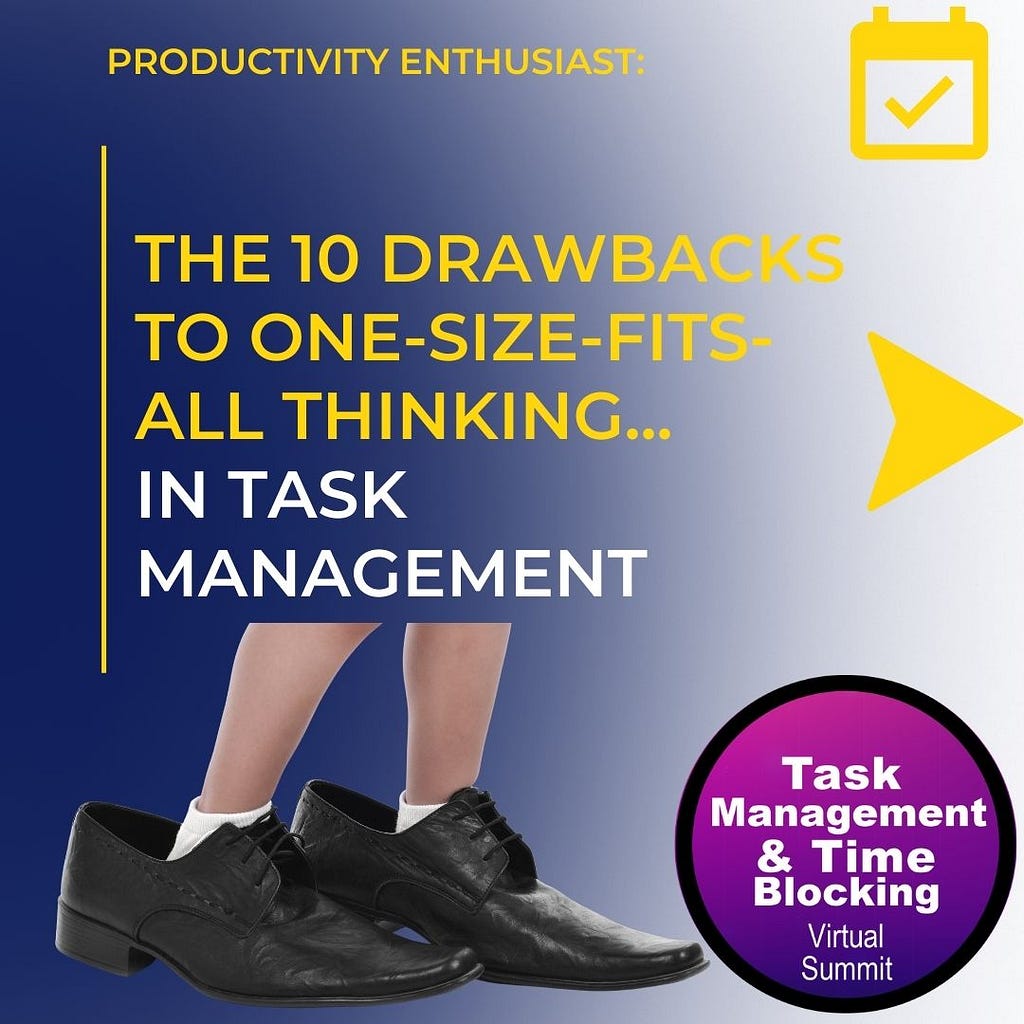
You are someone who pays attention to your task management. Like most people, you make many of these micro-commitments each day…to yourself.
You are managing more than ever, feeling accomplished, but also a little concerned. As the load increases, you wonder if others are also in the same boat. Here is some good news…we are all looking for answers, but now and then we look to simple one-size-fits-all answers.

Sidebar: It’s not that one-size-fits-all thinking is wrong. In the beginning, it’s actually quite useful…

Sidebar: In the penultimate slide, you’ll see why the early success is a drawback.
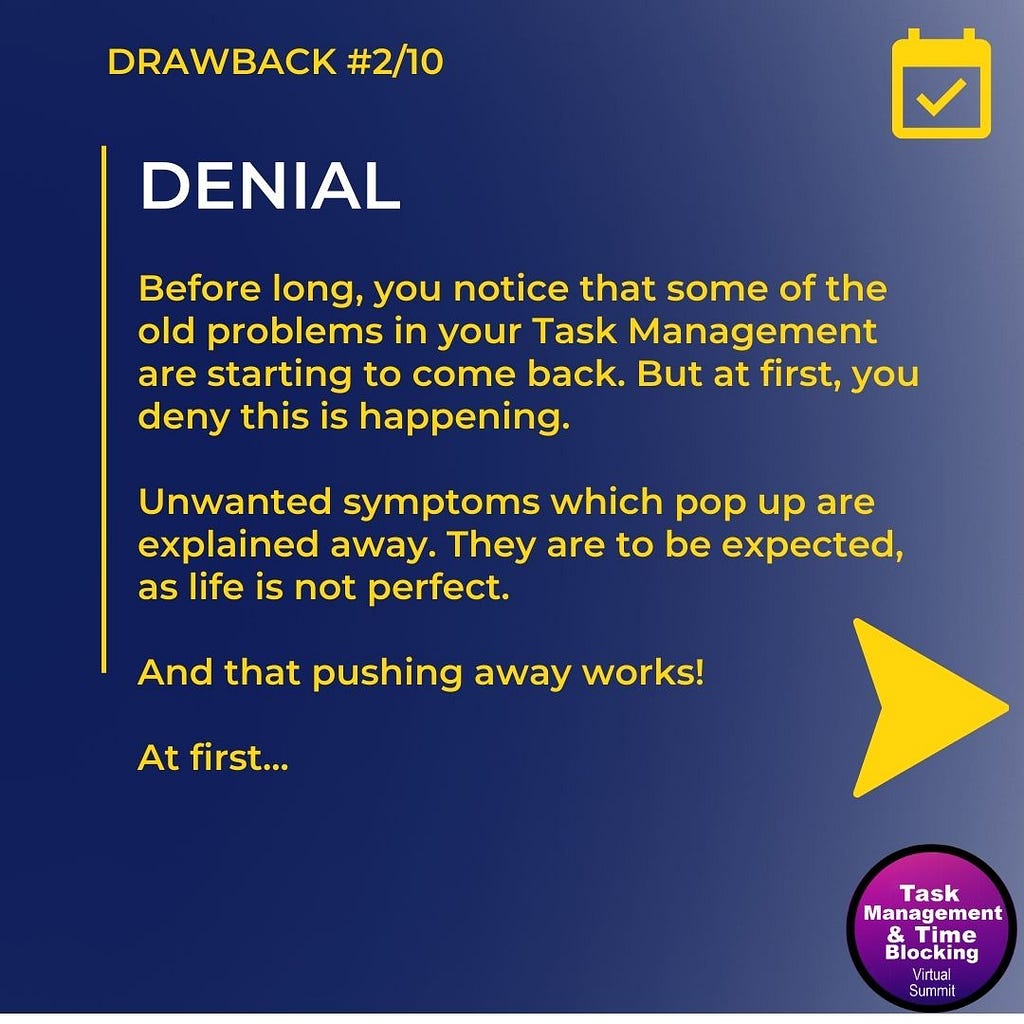
Sidebar: This is only to be expected. As you manage a certain number of tasks effectively, life hands you more. Unless you aggressively shut them down, your task load increases. Eventually it surpasses your capacity…so the “old problems” or “unwanted symptoms” return, or show up in new forms.

Sidebar: As you near the limits of your capacity, you try to do the same things better.
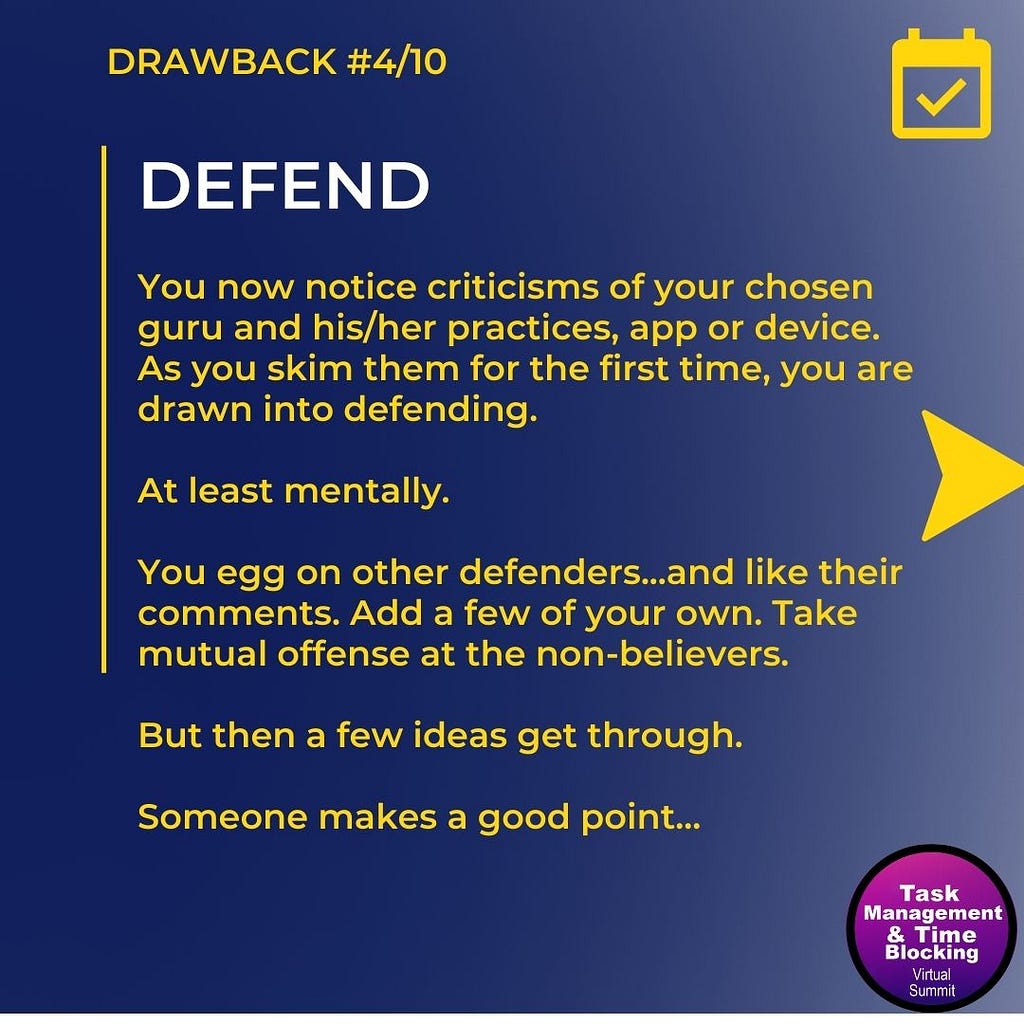
Sidebar: Along with the practical challenge of completing tasks, you may become entangled. Your ego becomes involved and you don’t want to be shown that your one-size-fits-all solution was incorrect.
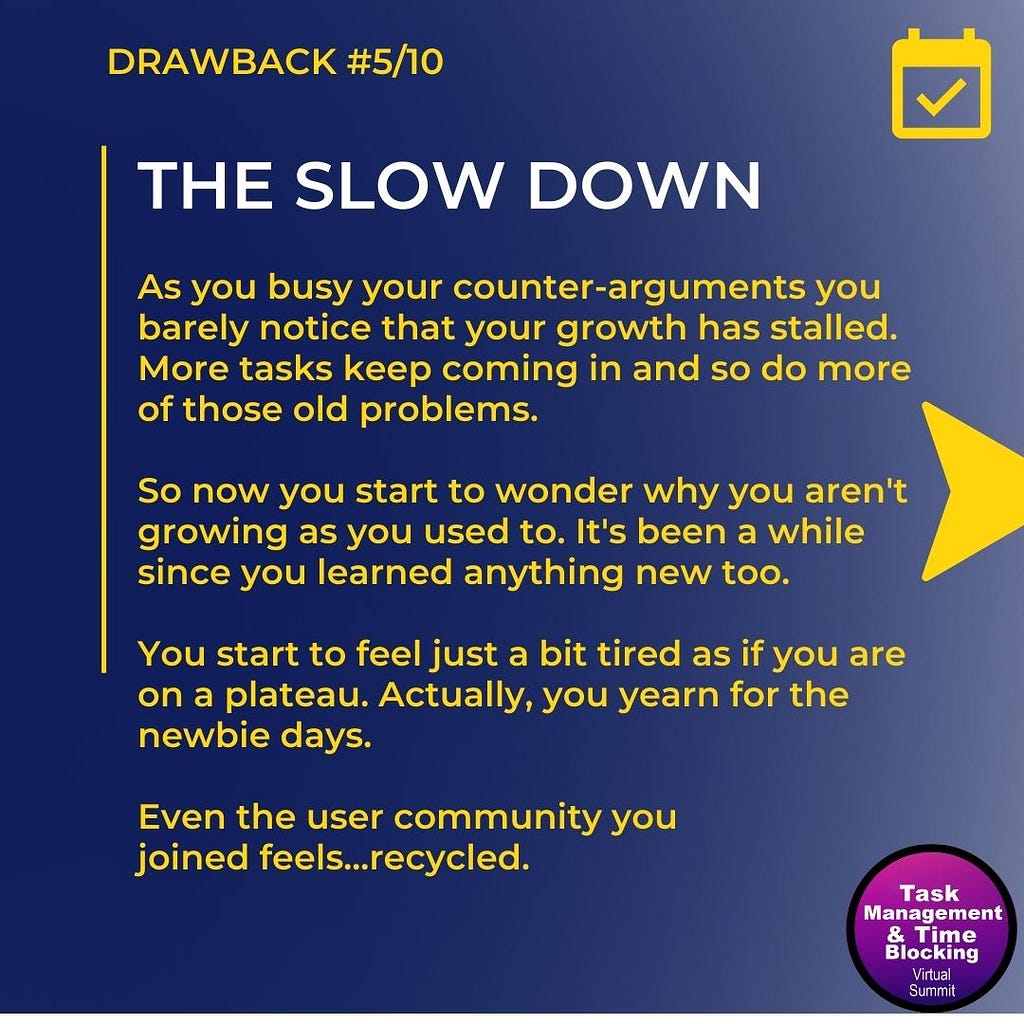
Sidebar: Now you are trying to handle more tasks than your personal system can handle. Your growth stops, and you see more mistakes. Now you accept that there might be a better way.
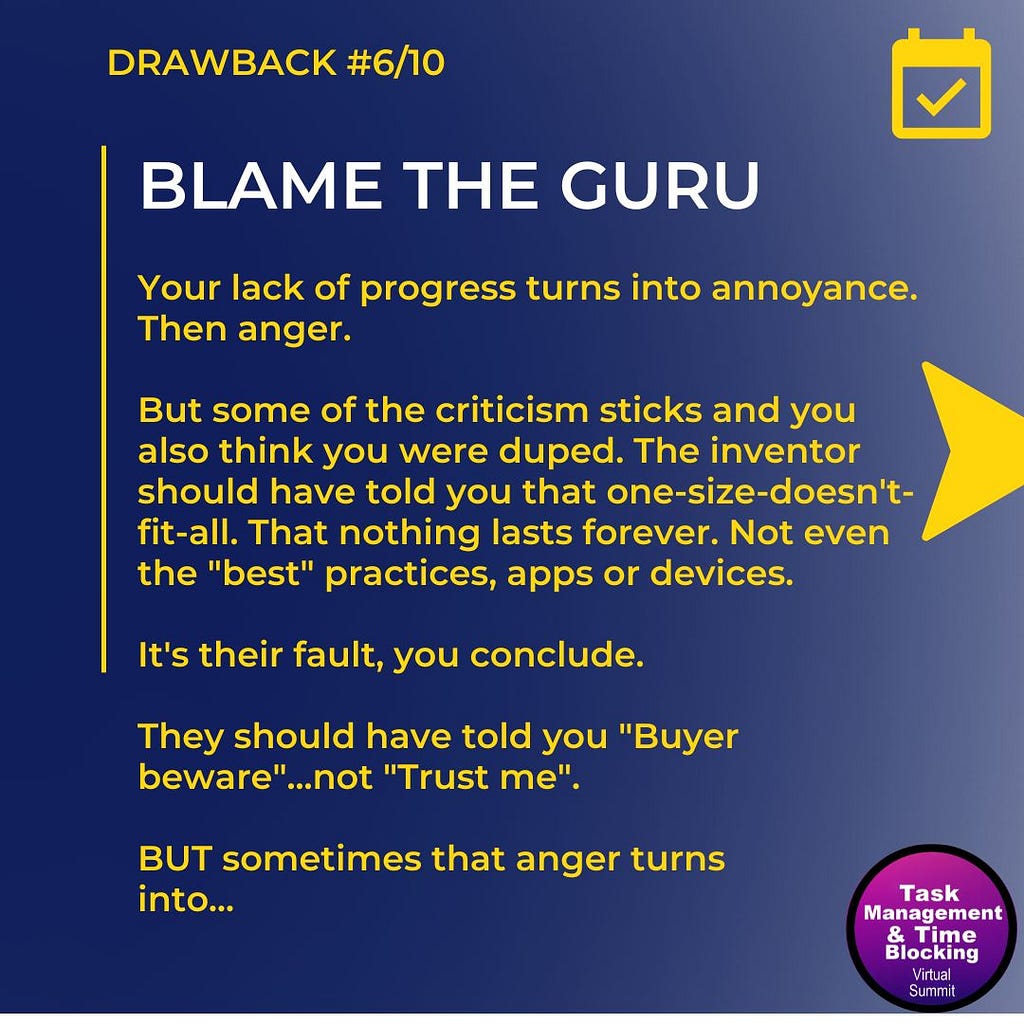
Sidebar: A few become bitter. The fuel turns into complaints via posts, tweets and even entire books.

Sidebar: Going “inside” versus “outside” for answers is a major turning point.
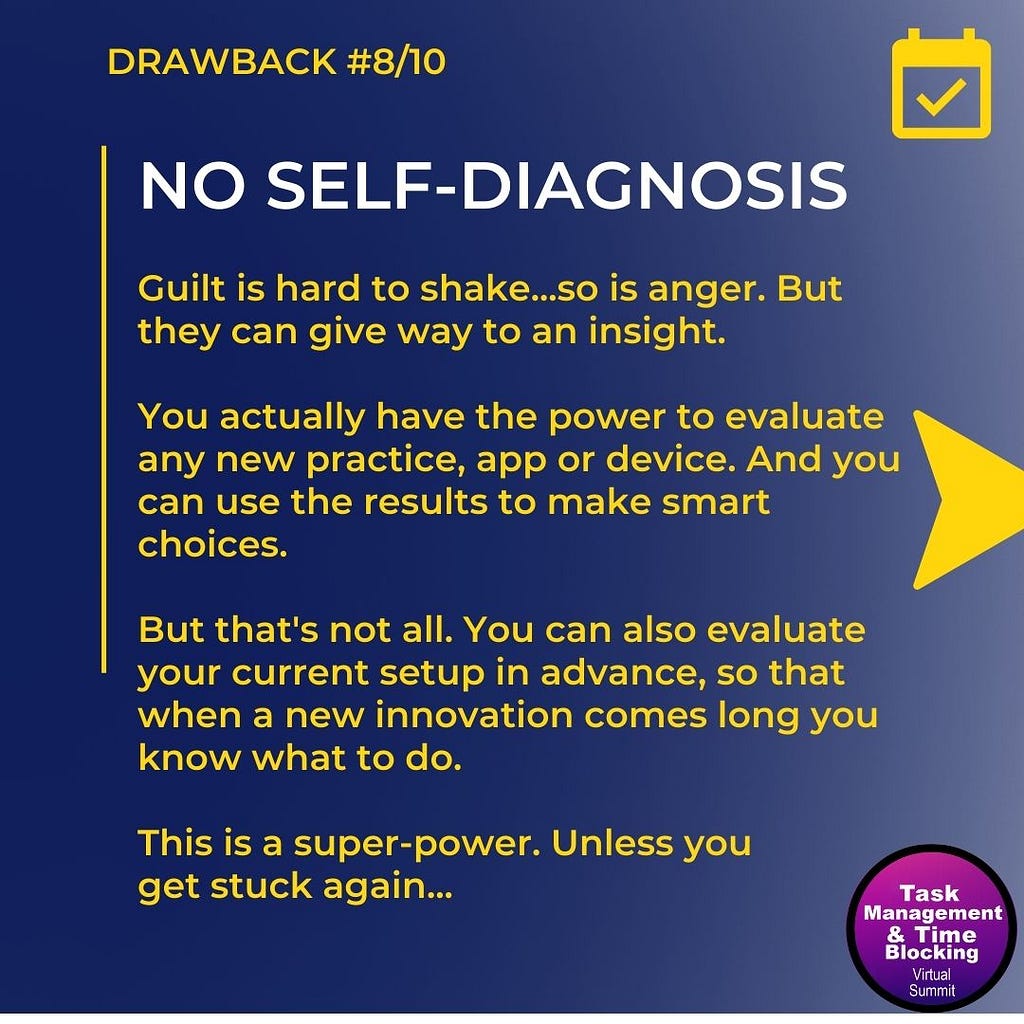
Sidebar: Few make it to this transition, but it’s transformative!

Sidebar: But just before a victory is announced, a final temptation arises. You latch on to another one-size-fits-all solution.

Sidebar: Now you have found your independence. The path is yours and you can choose to shape it. All you need are some skills.

Sidebar: Now that you “know better” the world is your oyster…everyone who develops a system of practices, app or device if your friend.

Our early indications are that this summit will be like no other we have done in prior years. The presenters are stepping up to the challenge in unprecedented ways to have some unique conversations.
If the thought has even crossed your mind that one-size-does-not-fit-all, don’t miss this opportunity to make progress.
Free etickets available — https://timeblockingsummit.info
Summit dates: March 2–4, 2023. 24-hour access to content.
The 10 Drawbacks to One-Size-Fits-All Thinking in Task Management was originally published in 2Time Labs on Medium, where people are continuing the conversation by highlighting and responding to this story.











